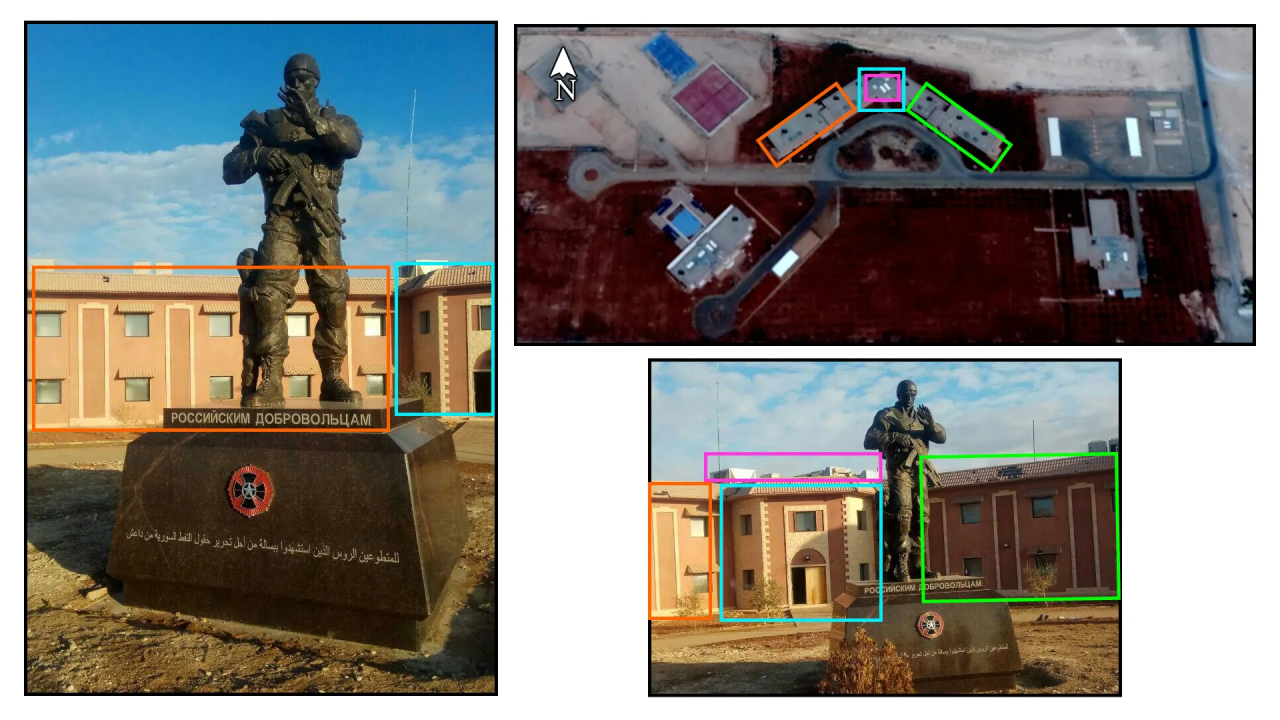#PutinAtWar: Tributes to Russian Mercenaries from Ukraine to Syria
Tracking Russian mercenary statues erected in Syria and Ukraine
#PutinAtWar: Tributes to Russian Mercenaries from Ukraine to Syria
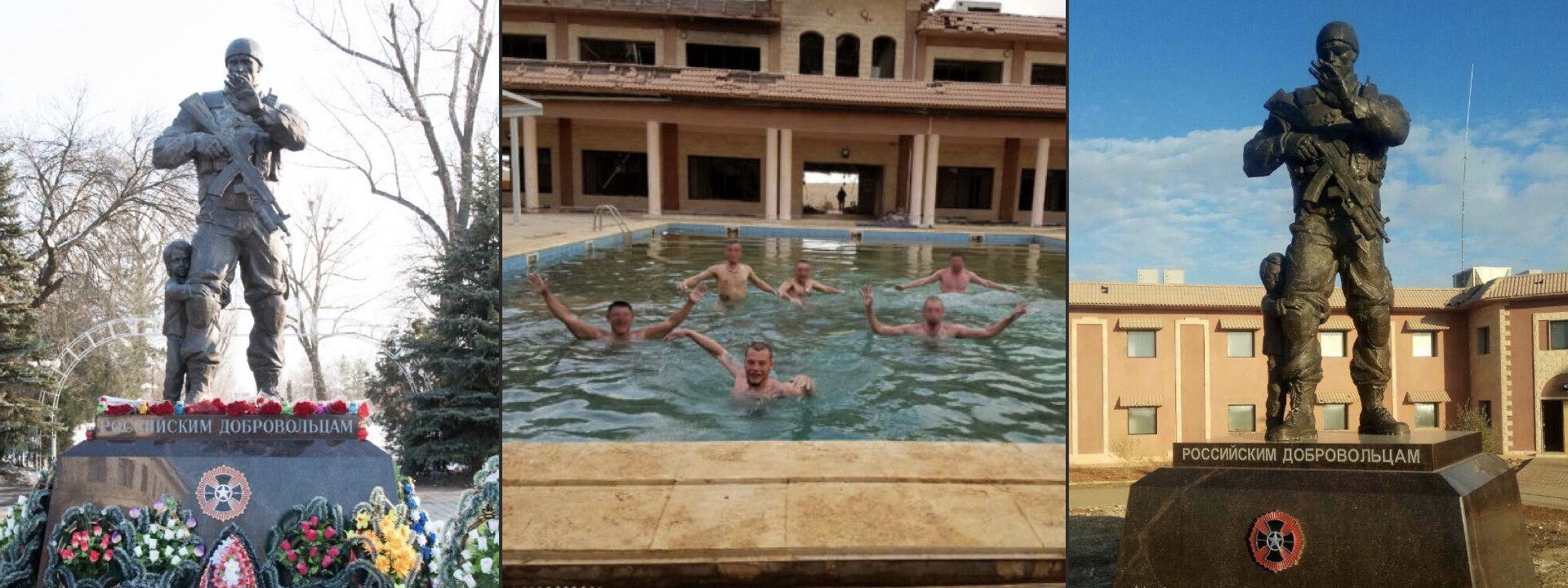
BANNER: Left: (Source: Twitter / @RussiansForward); Center: (Source: Fontanka); Right: (Source: Arabitoday).
On February 22, the first images of a statue dedicated “to Russian volunteers” (российским добровольцам) in Luhansk appeared on Russian social media platform VKontakte (VK). This monument appeared to be an exact copy of a statue erected outside of Palmyra in Syria as early as January 2018. Furthermore, both statues had a military insignia similar to the “Wagner Cross” of the infamous Russian Wagner Group mercenaries (Группа Вагнера). Both Syria and Ukraine are known locations where Wagner mercenaries operate for hire.
The Wagner Group is believed to be funded by Yevgeny Prigozhin, an oligarch with close ties to Russian President Vladimir Putin. Prigozhin is subject to economic sanctions by the United States due to his extensive business dealings in the Russian defense industry and alleged support of the Internet Research Agency, otherwise known as the St. Petersburg “troll factory”.
Statue in Ukraine
A statue of a soldier, protecting a little girl, was erected in Luhansk as recently as February 22, 2018. According to various media and social media sources, the location chosen for the statue was in the Luhansk Square of Molodoi Gvardii (Сквер Молодой гвардии) in the so-called Luhansk People’s Republic.
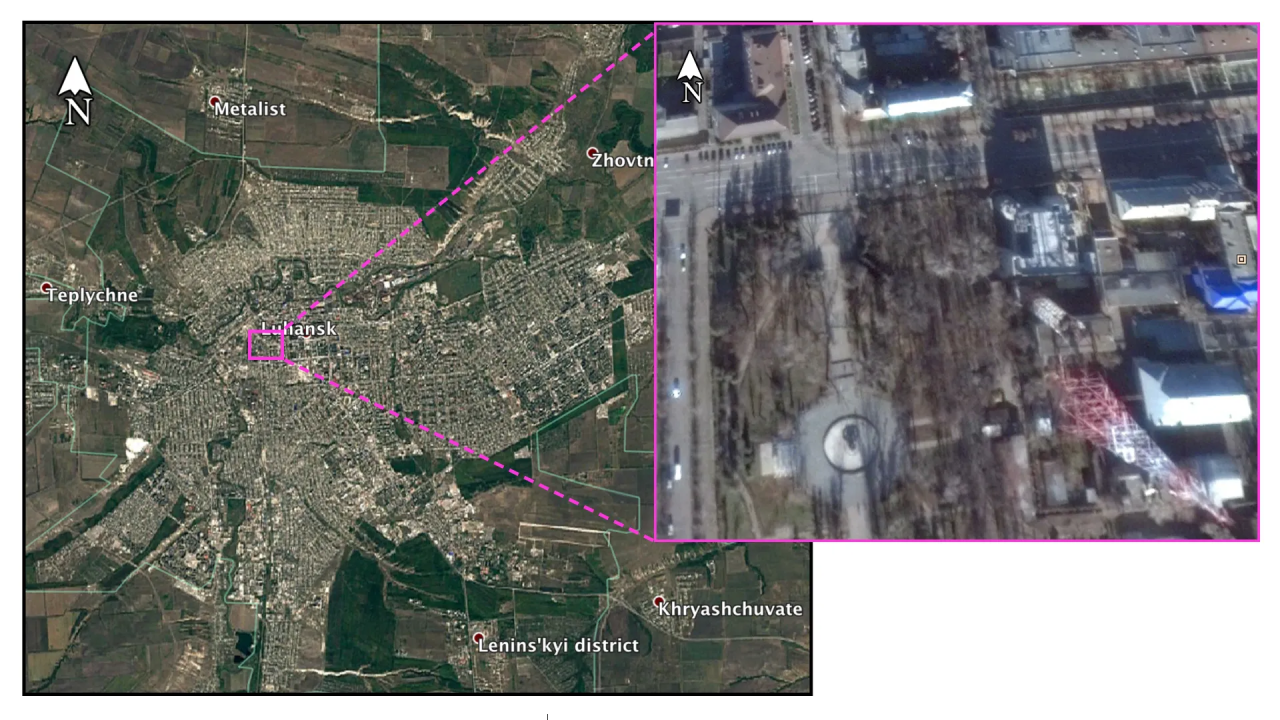
After closer examination using geolocation data, @DFRLab confirmed the location of the statue to be at the entrance to Molodoi Gvardii Square. A picture of the statue under construction also appeared on Twitter the same day.
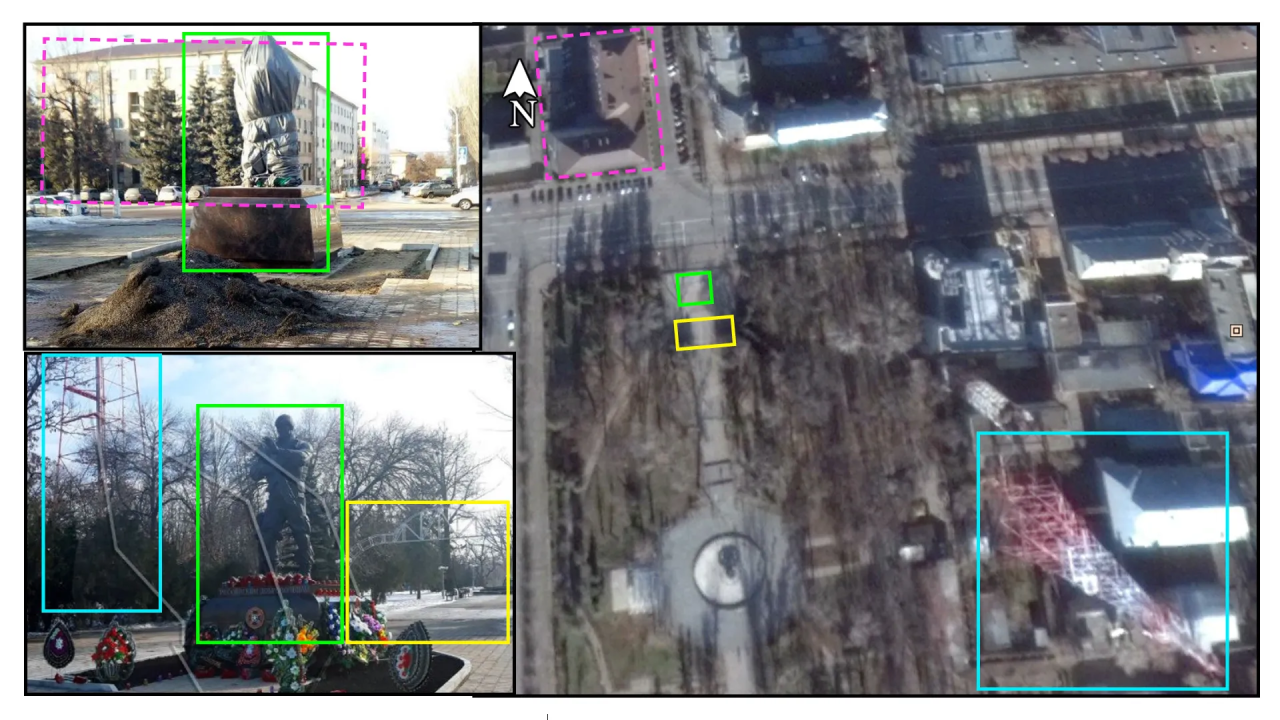
This sudden appearance of the statue raised some valid questions: for whom was the statue built and why was it erected in Luhansk?
Examining the Statue
The hero soldier depicted in the statue did not appear to be wearing the official Russian military uniform. The inscription on the statue’s pedestal read “To Russian volunteers” (Pоссийским добровольцам), which suggested the statue was not built in the memory of regular Russian forces.
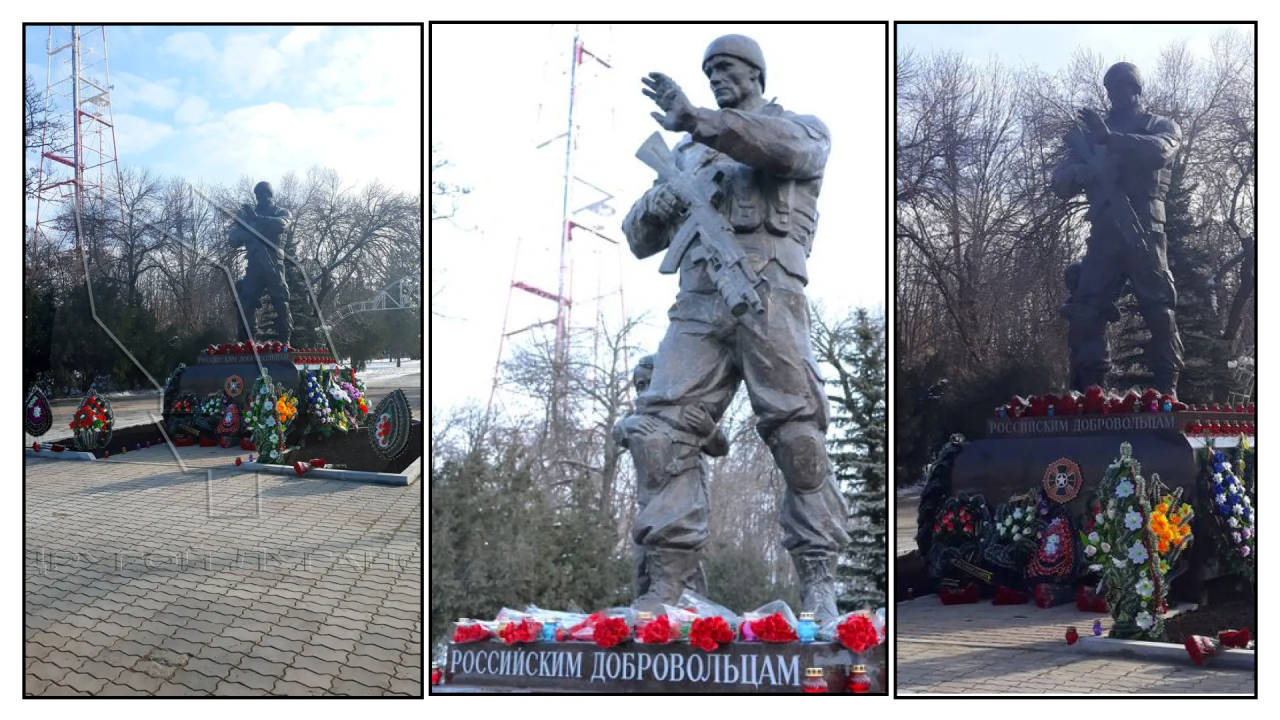
Furthermore, a military insignia on the pedestal closely resembled the “Wagner Cross” of the infamous Wagner Group mercenaries (Группа Вагнера). The “Wagner Cross” is a medal awarded posthumously to Wagner Group mercenaries killed in action. Numerous photos recently surfaced, in which the relatives of the deceased soldiers received the medals.
The Wagner insignia was an identical match with the insignia on the statue’s postament. The “Wagner Cross” also includes the inscription: “For blood and bravery” (“за кровь и храбрость”), which was visible on the pedestal’s insignia as well.
This evidence suggested the statue in Luhansk was built for the Wagner Group mercenaries rather than for Russian soldiers or volunteers.
@DFRLab previously reported on Wagner soldiers killed in Syria, who had also served in Donbas fighting alongside separatists against Ukrainian government forces. A list of Wagner soldiers fighting in Donbas is available on the Ukrainian website Myrotvorec.
Wagner: From Ukraine to Syria
Another surprising fact about the statue in Luhansk was that it is not an original monument. Researchers on social media pointed out that the statue of the soldier is an exact copy of a statue erected in Syria, as early as January 2018. After a closer examination, we verified the statues are identical, except the Syrian statue’s pedestal, which also had an inscription in Arabic. The inscription read, “For Russian volunteers who died heroically in the liberation of Syria’s oil fields from ISIS.”
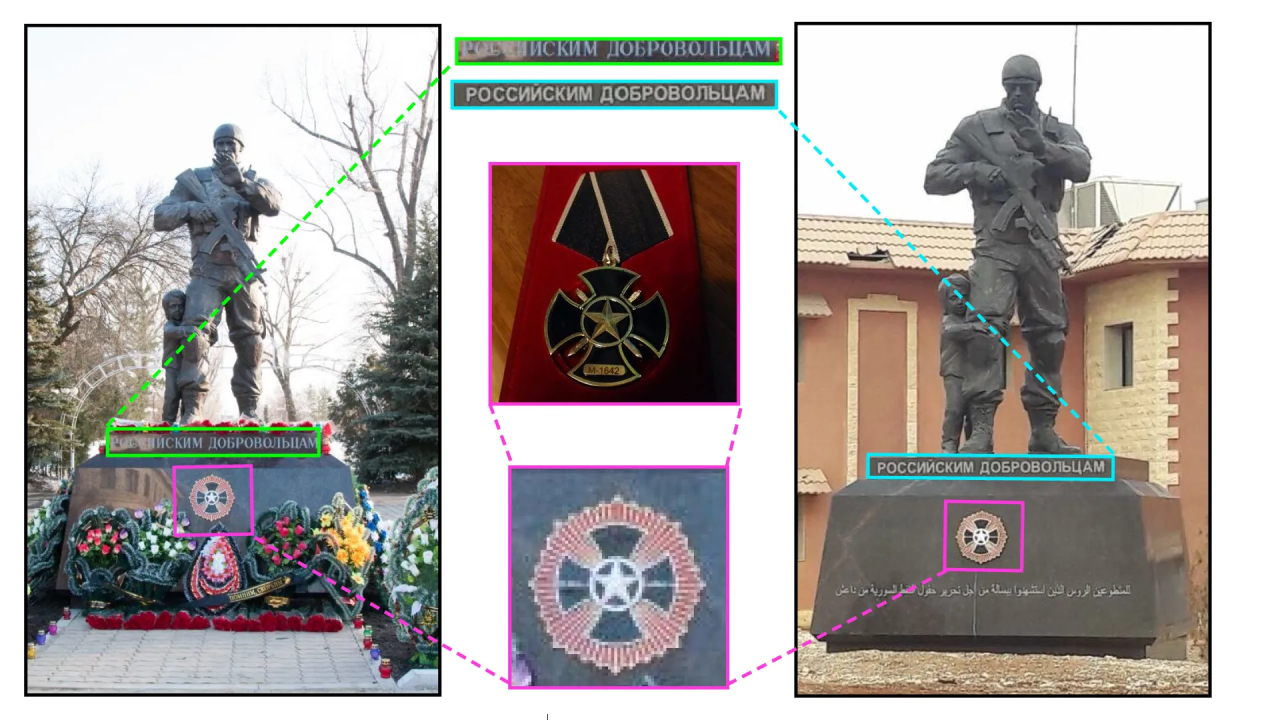
Statue in Syria
A lot of posts with the same mercenary statue photo were found on the social media, as early as January 22, 2018, but none of the posts mentioned where the actual location of the statue is. All the photos posted on social media contained the same photo of the statue with very limited geolocation data and described the statue to be “in Syria.”
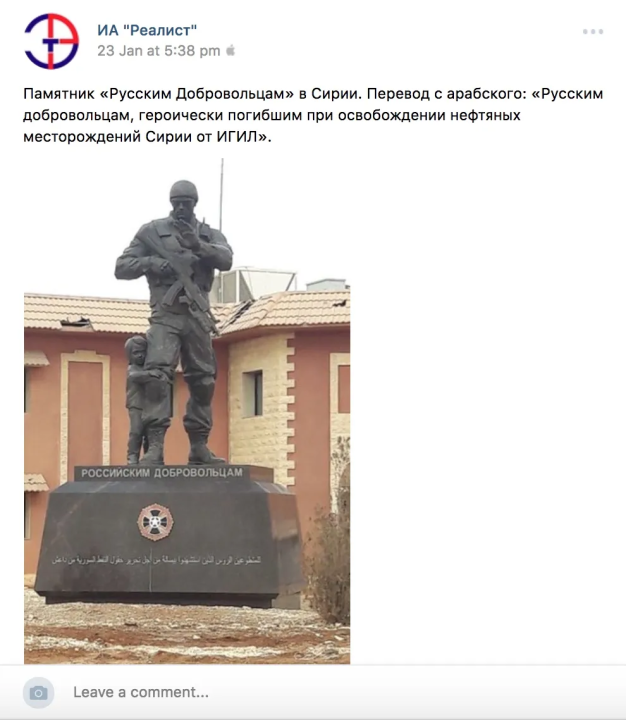
Only after a number of searches in Arabic language, we found one article in Arabitoday containing more pictures of the statue. These pictures not only revealed more geolocation data but also confirmed that the statue is real and, beyond a shadow of doubt, located in Syria.
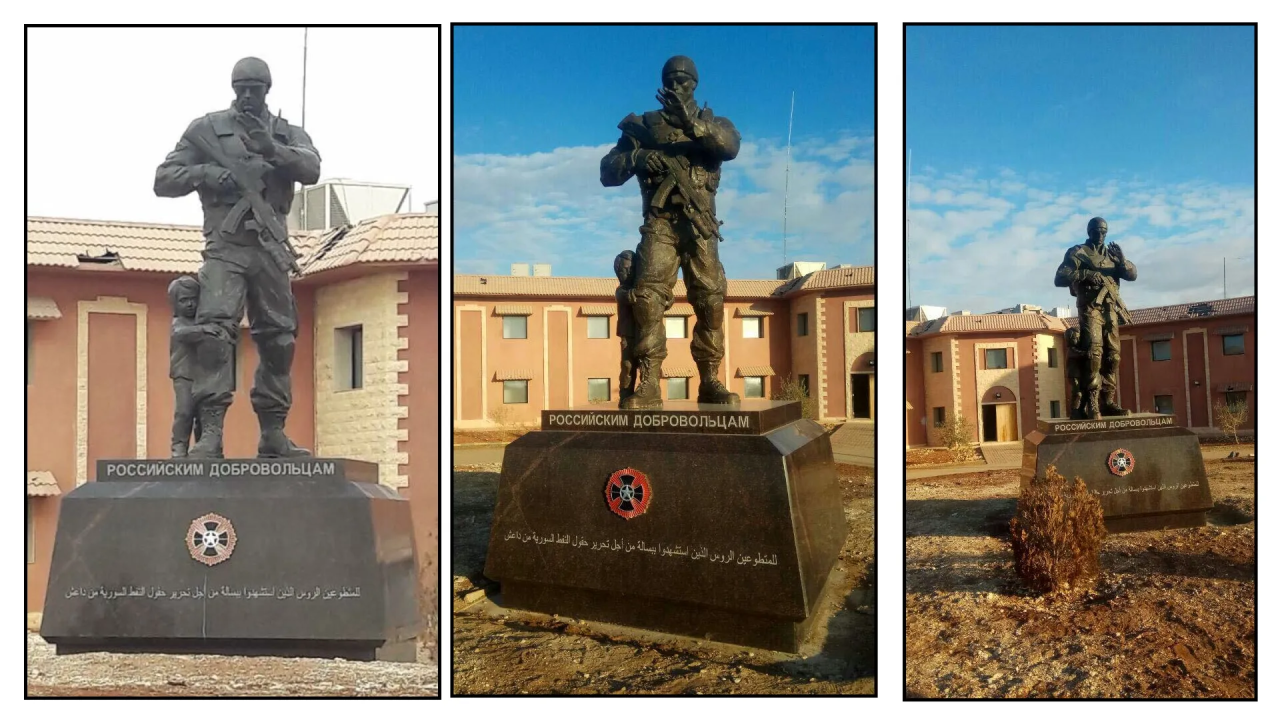
Nonetheless, the initial geolocation data in the photos was not enough to reveal the actual location of the statue.
Some Russian media sources claimed, that the latest “Wagner Cross” medals were awarded to the mercenaries who fought ISIS in Palmyra. The inscription on the monument also mentioned that the mercenaries were fighting ISIS and recovering oil fields. While searching for military clashes between ISIS and Syrian government forces in the vicinity of Palmyra, we found a video from January, 2017 showing a group of ISIS militants blowing up a natural gas plant.
The aforementioned plant was called the Hayyan Gas Company and was destroyed when ISIS militants retreated, reportedly leaving millions of Syrians without heat throughout the winter. This video did not seem to be related with the Wagner Group, except one of the buildings in the video had similar architectural design as the building behind the mercenary statue.
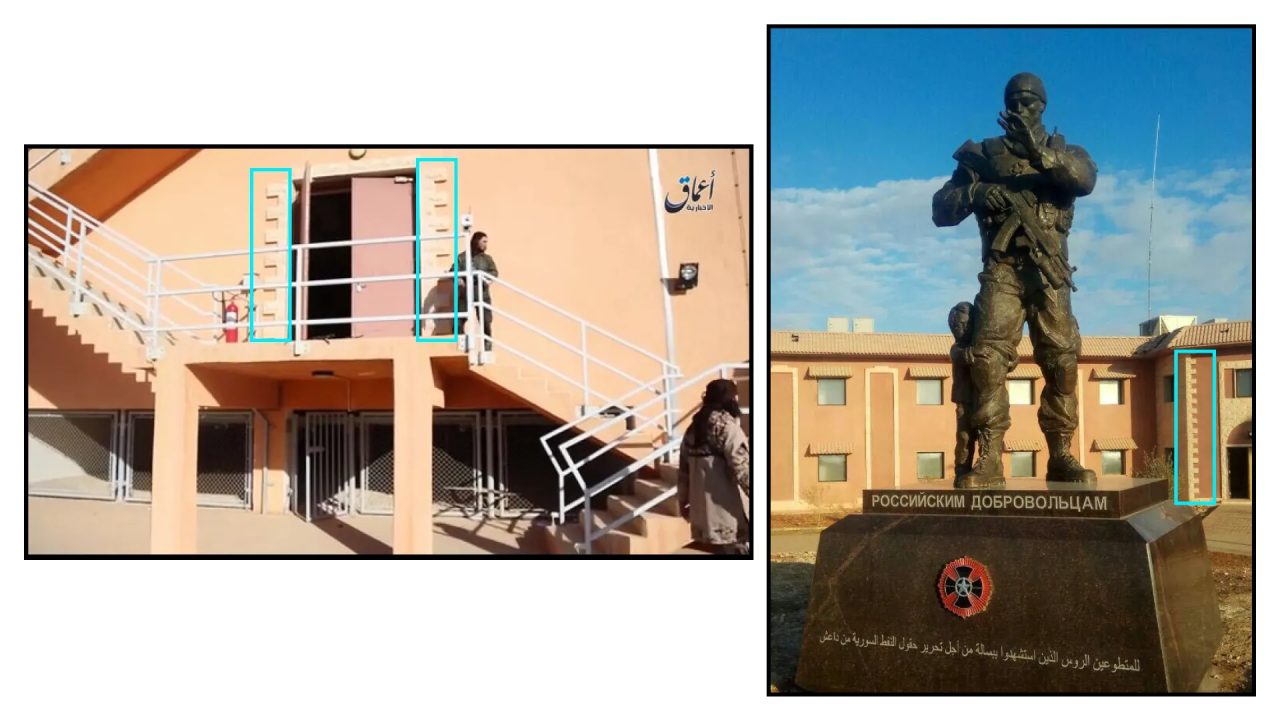
The Hayyan natural gas plant is situated about fifty kilometers west from the city of Palmyra.
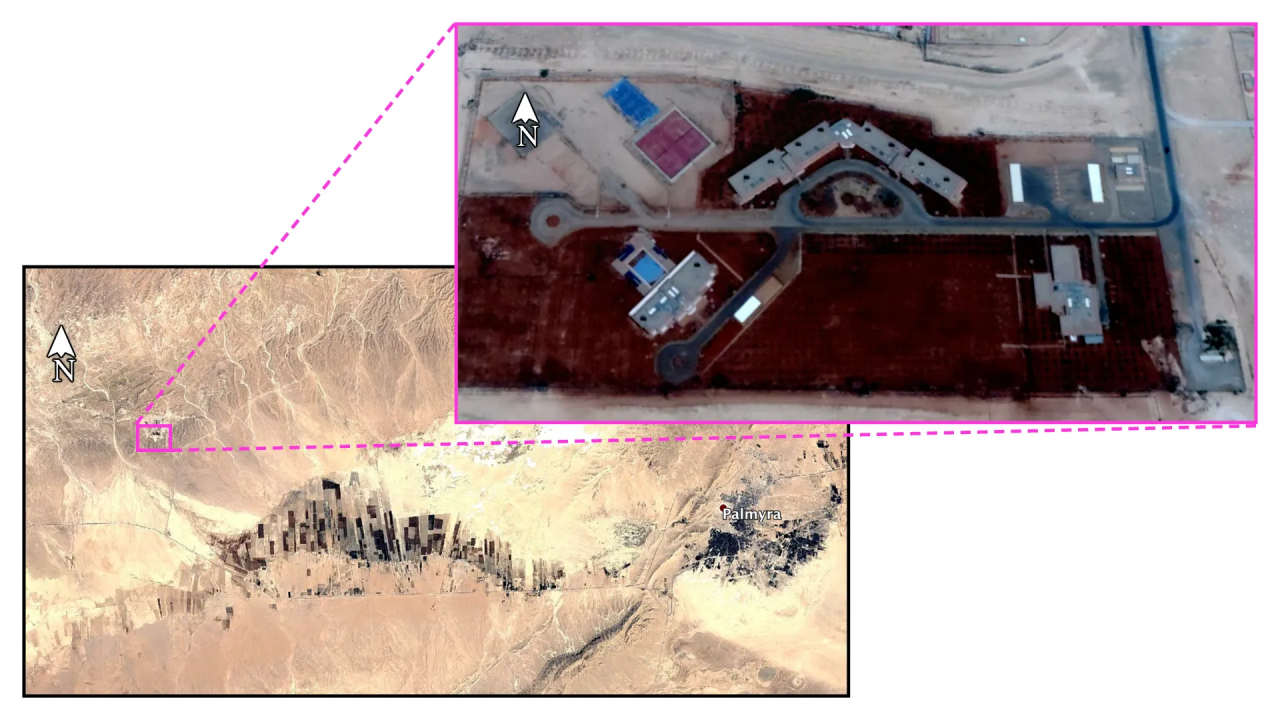
After cross-referencing the satellite imagery with the photos of the mercenary statue, we concluded that the locations are the same. The mercenary statue was erected in front of the main entrance to one of the buildings, on the southern part of the plant’s territory.
According to the pictures posted on social media, the Syrian Arab Army managed to recover the the factory as early as February 17, 2017 and repairs started in March. Apparently, Wagner Group was actively involved in fighting throughout the area.
On October 10, 2017, Russian newspaper Fontanka.ru published an article about the infamous Russian neo-nazi Alexei Milchakov fighting in Syria. Back in 2014 Milchakov established a reconnaissance group called Rusich (Русич), which is well known for their sadistic war crimes. In Donbas, this unit was responsible for killing at least 40 Ukrainian soldiers of Aydar Battalion and the 80th Air Assault Brigade. Milchakov is known for cutting off ears of killed Ukrainian soldiers, scratching swastikas on their dead faces and taking selfies against the backdrop of the burned corpses of Ukrainians. His profile is public on Myrotvorec website. Reportedly, Milchakov later joined the Wagner group together with other members of the Rusich group.
The article also featured a photo of Milchakov together with other soldiers swimming in a pool. According to Fontanka, Milchakov and his subordinates were photographed in the Wagner Group’s base at Hayyan Natural Gas plant. After checking the geolocation data, we confirmed the location of the pool to be in the territory of the Hayyan plant.
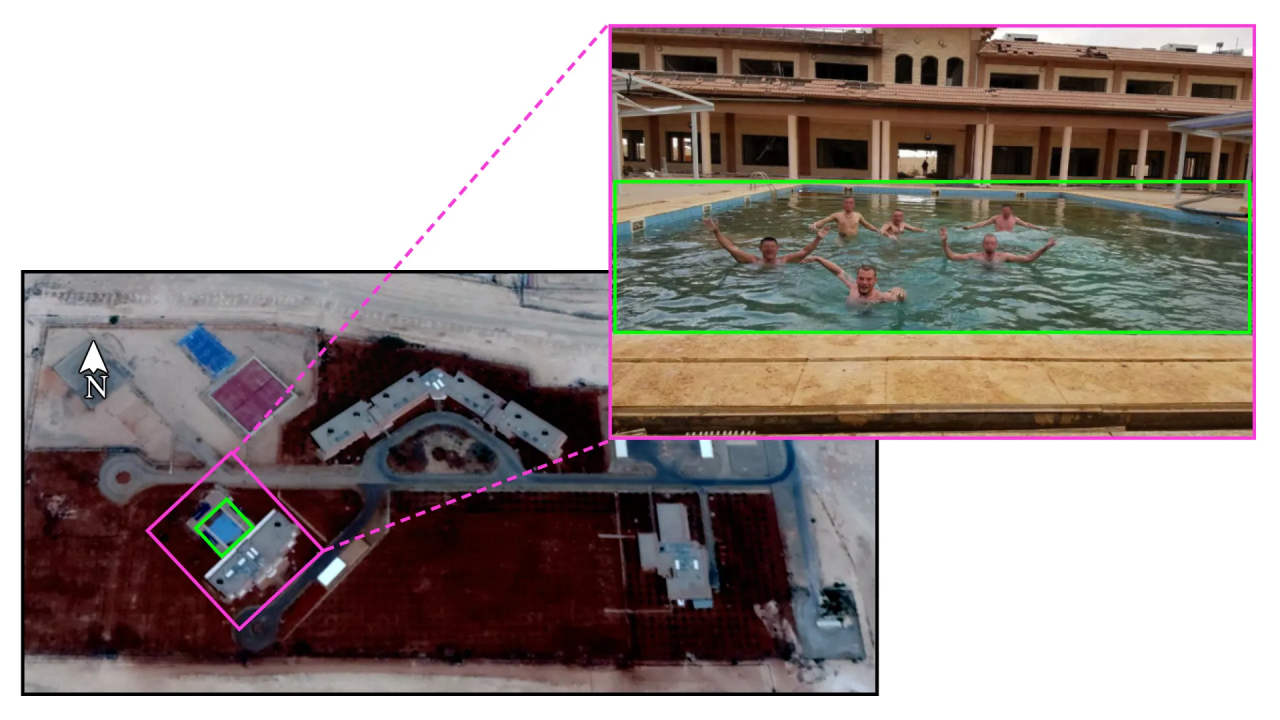
Most likely the Wagner group was involved in retaking the plant in early 2017 and afterwards established a base on the territory of the plant. This is corroborated by a statue erected in their honor on the premises of their base, with words in Arabic thanking them for their deeds. The recent uncovering of the statue suggests that the Wagner Group is most likely still deployed in the plant.
Here are the locations pin-pointed on a map:
Conclusion
Wagner recently entered the media spotlight for their operation in Syria in February 2018, but they were active long before that. Wagner Group is also known to have operated in Donbas and the annexation of Crimea. Countless war crimes inflicted by these mercenaries are now being immortalized with statues, further twisting the historical narrative. The true nature of the Wagner Group has nothing to do with being volunteers or with saving children, as the statue suggests. There should be no mistake that the men employed by this company are mercenaries, soldiers of fortune who fight for the highest bidder. What is more, these statues are being erected in locations where Wagner Group’s dirty deeds where carried out, and more copies may appear in the future. The fight for the Russian historical narrative continues.
@DFRLab will continue to monitor the actions of Wagner Group mercenaries in Syria and Ukraine. We will also continue to monitor Russian military operations and developments in Syria.
Cite this case study:
Lukas Andriukaitis, “PutinAtWar: Tributes to Russian Mercenaries from Ukraine to Syria,” Digital Forensic Research Lab (DFRLab), March 9, 2018, https://dfrlab.org/2018/03/10/putinatwar-tributes-to-russian-mercenaries-from-ukraine-to-syria/.


